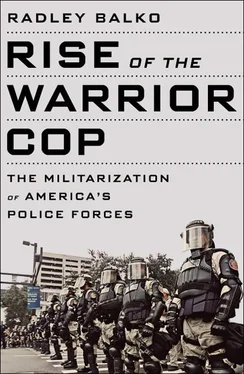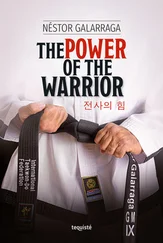20. H. G. Reza, “Was Warrant Warranted? Raid Yields No Drugs, Leaves Family Fearful and Upset,” Los Angeles Times, September 8, 1989.
21. Amy Wallace, “Drug Raiders Broke in Wrong Home, Police Say,” Los Angeles Times, February 13, 1990.
22. Tony Perry, “Keeping Lid On in San Diego: Police: Department Reforms and a Resourceful Crisis Management Plan Are Credited with Maintaining Relative Calm After Verdicts in King Case,” Los Angeles Times, April 2, 1993.
23. Ibid.
24. Kristina Davis, “San Diego Boasts One of Nation’s Lowest Violent Crime Rates,” San Diego Union-Tribune, May 25, 2010.
25. “San Diego Historical Crime Actuals, 1950–2011,” available at: http://www.sandiego.gov/police/pdf/crimeactuals.pdf(accessed October 22, 2012); see also Keegan Kyle, “How Crime’s Changed in San Diego: 12 Graphics,” Voice of San Diego, October 4, 2012, available at: http://www.voiceofsandiego.org/community/article_869cf294-0e6d-11e2-9072-0019bb2963f4.html(accessed October 22, 2012).
26. See US Department of Justice, Federal Bureau of Investigation, “Table 302: Crimes and Crime Rates by Type of Offense: 1980 to 2008,” available at: http://www.census.gov/compendia/statab/2011/tables/11s0302.pdf(accessed October 20, 2012).
27. “Gravely Ill, Atwater Offers Apology,” Associated Press, January 13, 1991.
28. William Bennett, “Should Drugs Be Legalized?” Reader’s Digest (March 1990).
29. The Bennett narrative is from Baum, Smoke and Mirrors, pp. 260–266.
30. Ibid., p. 266. The Bennett quote also appears in his books Body Count: Moral Poverty… And How to Win America’s War Against Crime and Drugs (New York: Simon & Schuster, 1996), and The De-Valuing of America: The Fight for Our Culture and Our Children (New York: Simon & Schuster, 1994).
31. William Bennett, “The Top Drug Warrior Talks Tough,” Fortune, March 12, 1990.
32. Larry King Live, CNN, June 15, 1989.
33. Baum, Smoke and Mirrors, p. 280.
34. Richard Morin, “Many in Poll Say Bush Plan Is Not Stringent Enough,” Washington Post, September 8, 1989.
35. For a roundup of stories of DARE kids turning in their parents, see James Bovard, “DARE Scare: Turning Children into Informants?” Washington Post, January 29, 1994.
36. Eric Slater and Sue Fox, “Ex-LAPD Chief Gates’ Son Arrested,” Los Angeles Times, October 11, 2004.
37. “Edward Byrne Memorial State and Local Law Enforcement Assistance Program,” Program Brief, Bureau of Justice Assistance, August 2002. (Available at: http://www.abtassociates.com/reports/byrne-formula.pdf). The grants are named for Edward Byrne, a New York City police officer slain by drug dealers. The grants grew out of a similar program established under the expansion of LEAA in 1968. The grants also fund a number of criminal justice programs other than drug policing and task forces.
38. Joint Chiefs of Staff, Joint Counterdrug Operations, Joint Publication 3-07.4 (2007).
39 “President’s Anti-Drug Plan Already Embroiled in Dispute,” Associated Press, September 5, 1989.
40. Robert Wagman, “Anti-Drug Plan Under Fire by Many” (syndicated column), December 6, 1989.
41. Lynn Norment, “Charles Rangel: The Front-Line General in the War on Drugs,” Ebony (March 1989). The article also includes an amazing ad encouraging Ebony ’s mostly black readership to apply for jobs as DEA agents. The ad features a short profile of DEA special agent Michele Leonhart, who would go on to head the agency under Presidents Bush and Obama.
42. Tony Mauro, “The War on Drugs: Are Our Rights on the Line?” USA Today, November 15, 1989.
43. Milton Friedman, “An Open Letter to Bill Bennett,” Wall Street Journal, September 7, 1989.
44. Dentinger, “Narc, Narc: Diary of Police Drug Raids on the Wrong Houses.”
45. Doris Sue Wong,” Judge Assails Policy on Gangs; Calls Police Searches Unconstitutional,” Boston Globe, September 20, 1989. See also: Peter S. Canellos, “Youths Decry Search Tactics,” Boston Globe, January 14, 1990.
46. Mike Kataoka, “County settles with man in mistaken drug raid,” Riverside Press Enterprise, February 11, 1994.
47. Lorine Harris v. Milton Grimes, 104 Cal. App. 4th 180 (2002). “News from Southern California,” Associated Press, June 1, 2004.
48. Jeffrey Yorke, “Show of Force,” Washington Post, May 18, 1988.
49. “Police Officer Shot to Death in Drug Raid,” Associated Press, September 1, 1988; Jeffrey Yorke, “A Show of Force; Pr. George’s Unit Strives to Dent Drug Traffic,” The Washington Post, May 19, 1988; “Drug Suspect WoundedBy Pr. George’s Police,” The Washington Post, October 28, 1982; James Rupert and Carlos Sanchez, “Pr. George’s Officer Shot in Drug Raid,” The Washington Post, September 1, 1988.
50. Joseph F. Sullivan, “Police Gun’s Blast Kills Officer on a Drug Raid,” The New York Times, August 4, 1989.
51. “Man Innocent of Police Murder During Drug Raid,” United Press International, August 17, 1989; Lynne Bumpus-Hooper, “DiGristine Sues Titusville Over Drug Raid,” Orlando Sentinel, February 15, 1990; Laurin Sellers, “Chase, No-Knock Rules for Police,” Orlando Sentinel, January 2, 1990.
52. Francis P. Garland, “2 counties sued over Ripon truck stop slaying,” Modesto Bee, July 3, 1990; Stuart Gordon, “Shooting victim’s kin sues; Damages sought from owners of truck stop,” Modesto Bee, October 20, 1990; Frankie Garland, “Lawsuit Likely in Fatal Raid,” Modesto Bee, October 25, 1989; Michael Winters, “Raid’s Shock Still Felt,” Modesto Bee, February 15, 1994.
53. Florida v. Riley, 488 US 445 (1989).
54. George Orwell, 1984 (1949; reprint, New York: Penguin/Signet Classic, 1961), p. 2.
55. The forfeiture figures are from Terrance G. Reed, “American Forfeiture Law: Property Owners Meet the Prosecutor,” Cato Policy Analysis 179 (Washington, DC: Cato Institute, September 29, 1992); the figures on SWAT teams are from Peter Kraska and Victor Kappeler, “Militarizing American Police: The Rise and Normalization of Paramilitary Units,” Social Problems 44 (1, February 1997); the figures on SWAT teams in smaller cities are from Peter Kraska and Louis Cubellis, “Militarizing Mayberry and Beyond: Making Sense of Paramilitary Policing,” Justice Quarterly 14 (4, December 1997).
Chapter 7: The 1990s—It’s All About the Numbers
1. James Bovard, “Flash. Bang. You’re Dead,” Playboy (March 1, 2000): 201.
2. Tom Hundley, “US Drafts Military in Drug Battle,” Chicago Tribune, February 11, 1990.
3. Brad Knickerbocker, “Military Drafted in Effort to Find, Eradicate American ‘Pot’ Growers,” Christian Science Monitor, August 27, 1990.
4. Figures are from Herb Robinson, “Disturbing Duty for National Guard,” Seattle Times, August 6, 1990; and “Tackling Illegal Drugs,” The ONGuard (newspaper of the Army and Air National Guard) 22 (11, September 1993).
5. John Painter Sr., “Police Launch Massive Drug Raid,” The Oregonian, July 22, 1989.
6. Ann Everest, “Putting Dealers Out of Business,” The ONGuard 22 (11, September 1993).
7. Michael Isikioff, “Interest in Grateful Dead Was Not Musical,” Washington Post, August 14, 1990.
8. Jerry Harkavy, “BIDE Tactics Help Drive Marijuana Legalization Effort,” Associated Press, April 8, 1992.
9. Ed Vaughn, “National Guard Involvement in the Drug War,” Justica (December 1992), quoted in Bovard, “Flash. Bang. You’re Dead,” p. 201.
Читать дальше












